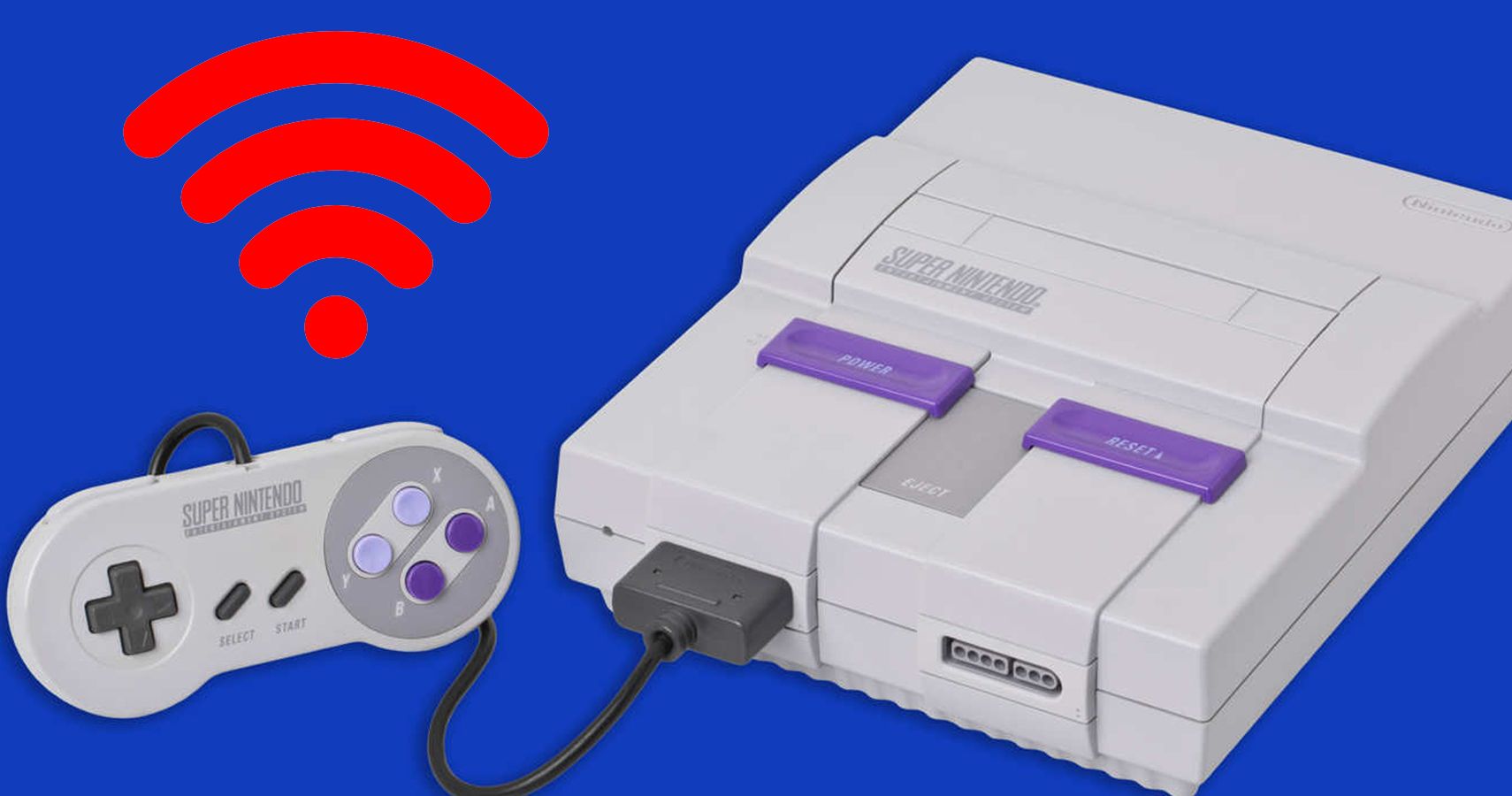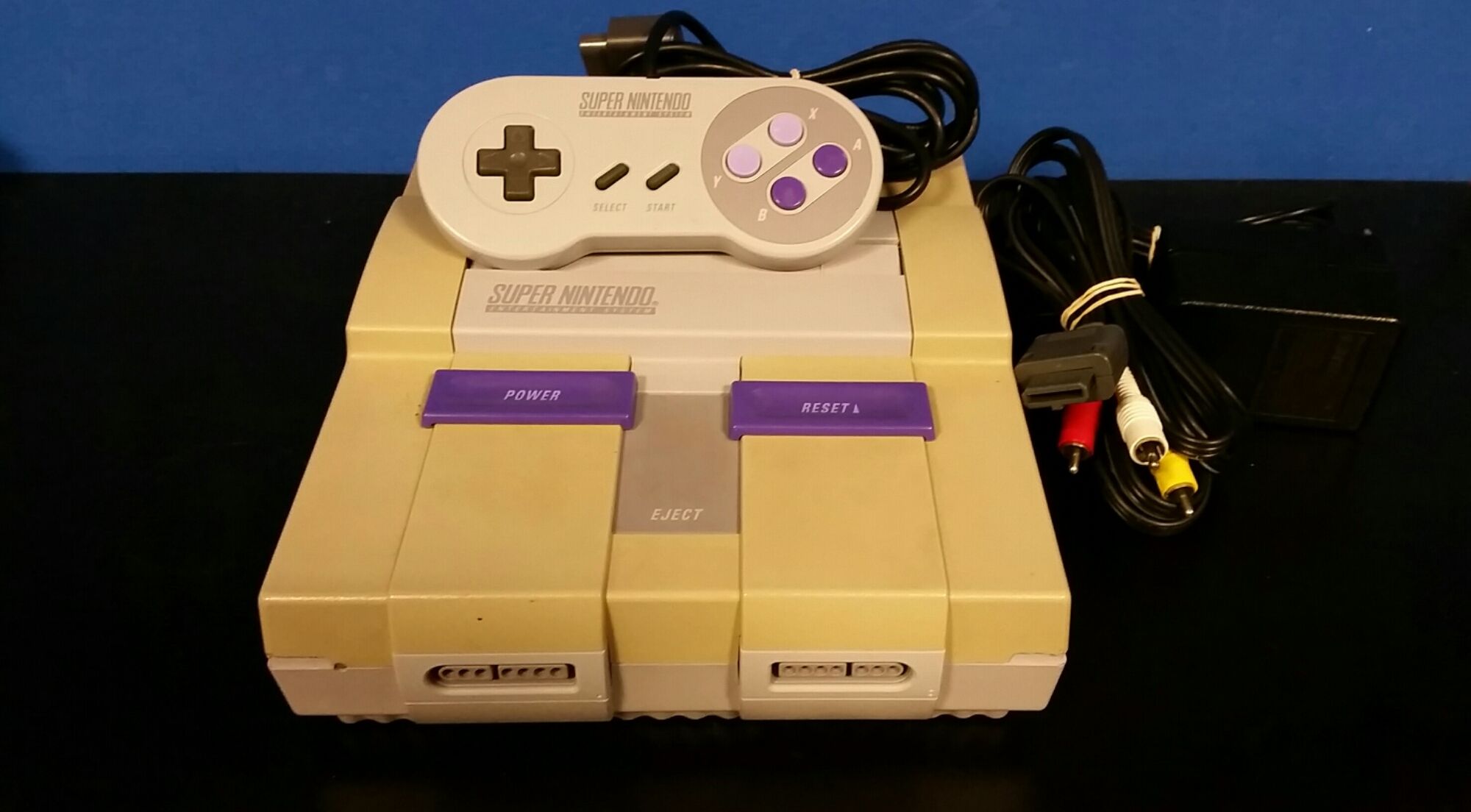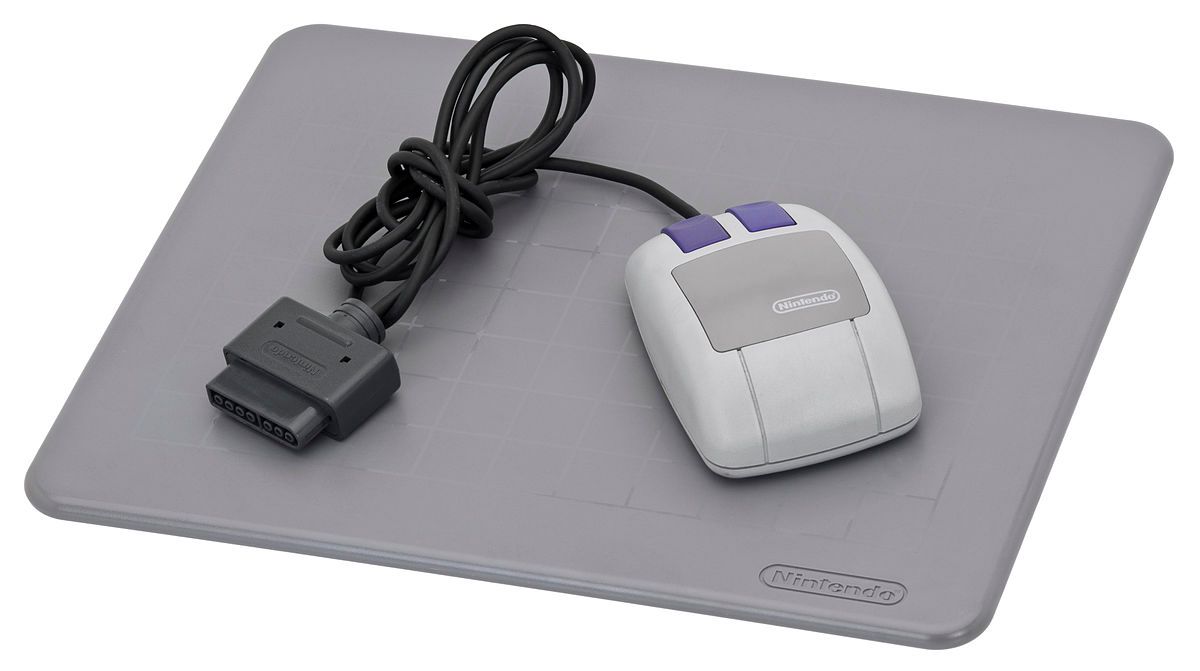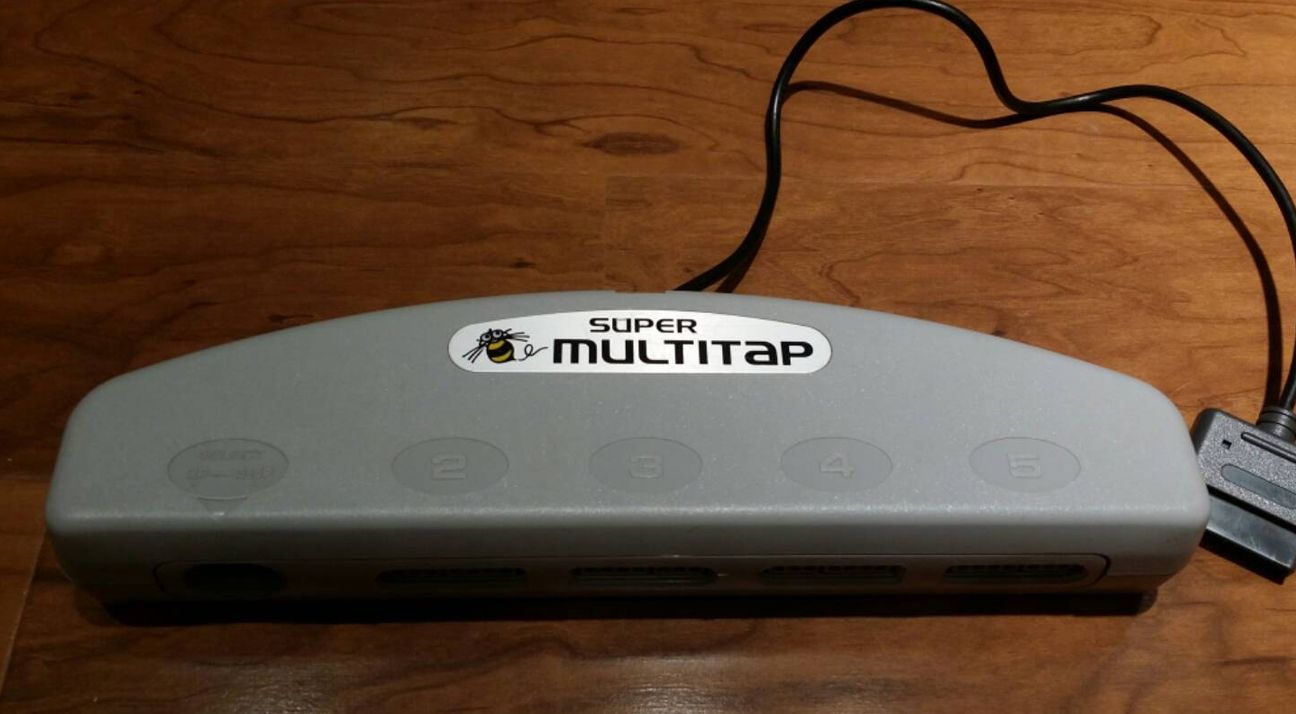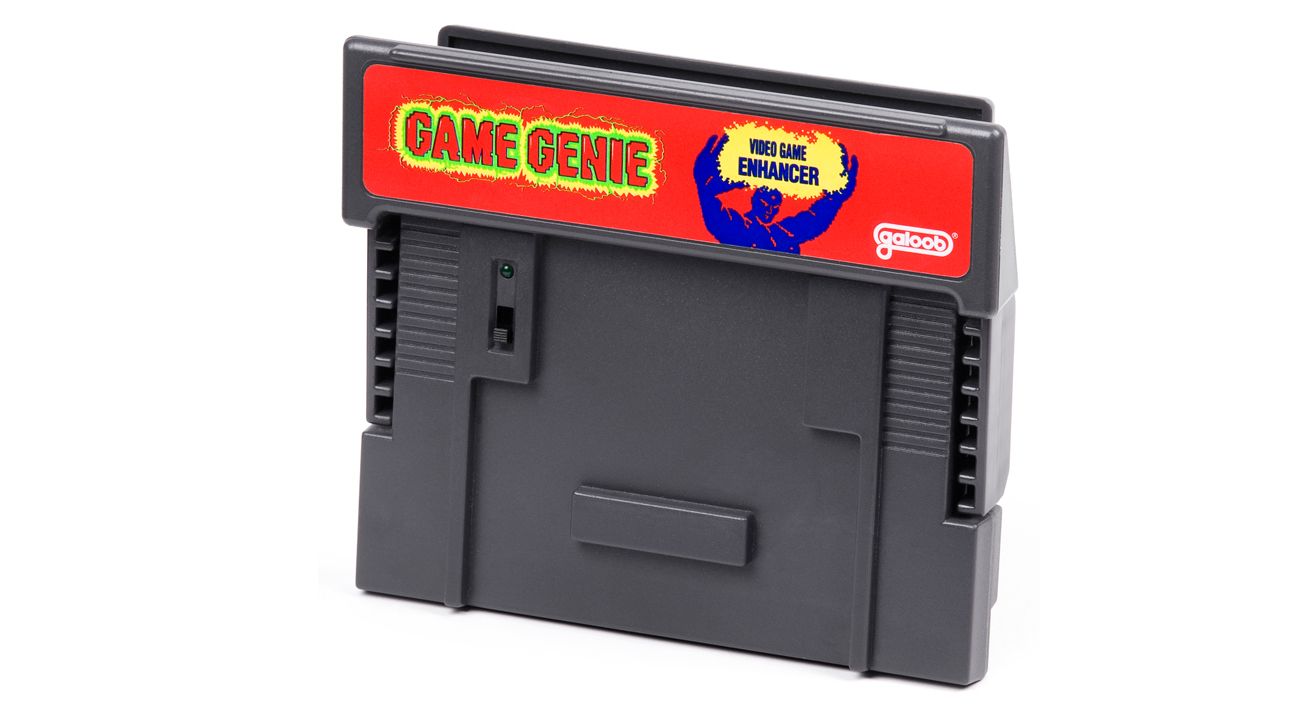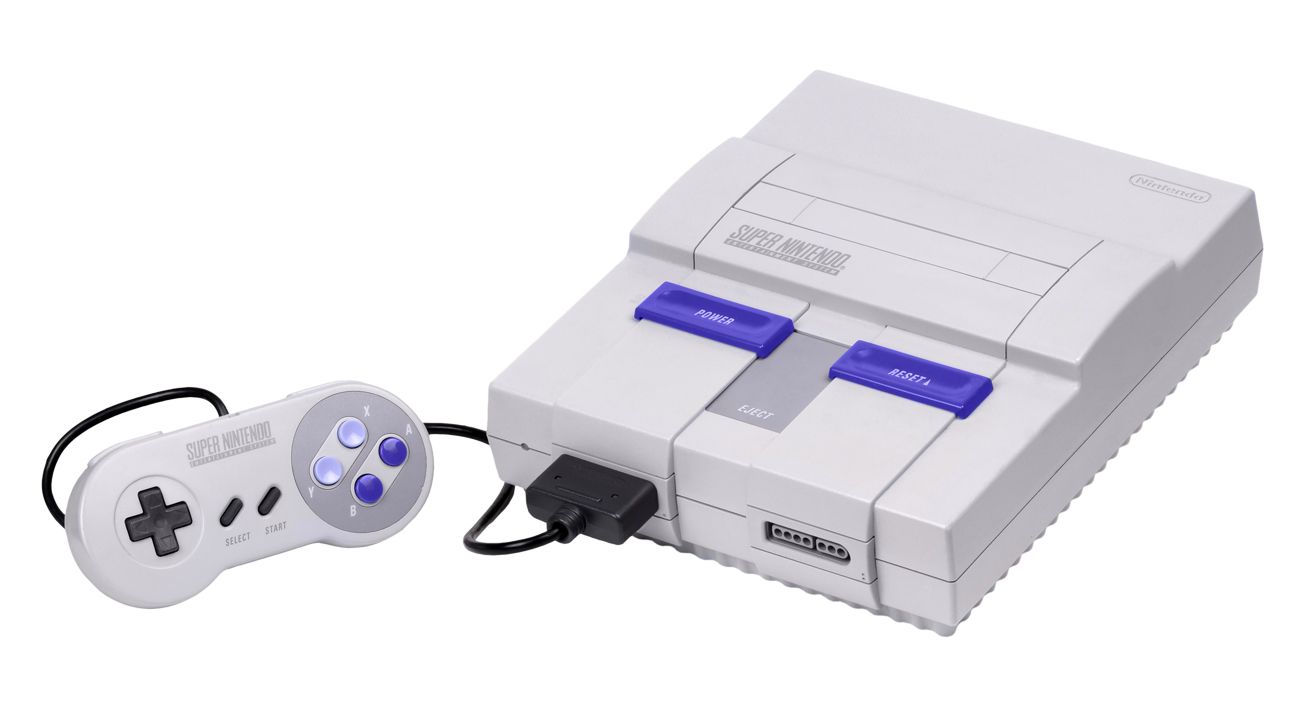The Super Nintendo released nearly 26 years ago and still remains one of the most popular console releases of all time. The Super Nintendo had such a successful launch in Japan that the country issued a new law that required all future consoles to be released on weekends to avoid social ramifications from weekday releases. Its initial launch of 300,000 sold out within hours.
Up against the popular Sega Genesis, the Super Nintendo easily gained dominance of the 16-bit market, thanks in large part to its brilliant launch title (Super Mario World) and its follow-up releases. Other launch titles, like F-Zero and SimCity, weren’t quite the smash hit as Super Mario World, but they became equally cherished. By the time the console ceased production in 1999, over 700 titles had been created and released.
Like the popular NES Classic, Nintendo unveiled last month that the Super Nintendo will also be receiving the Classic treatment in the form of the SNES Classic. The device will ship with two controllers and 21 titles pre-loaded onto the system. The lineup for the SNES Classic is fantastic, with titles like Super Mario World, Super Mario Kart, TLOZ: A Link to the Past, F-Zero, and Super Metroid leading the excitement. Also of note is the reappearance of the previously unreleased Star Fox 2. The game was created back in 1994 and initially set to release in 1995, but Nintendo canceled the project. Star Fox 2 leaked online back in the 2000s, but this will be its first official release from Nintendo.
However, we're looking at the original SNES Today and 15 different things you never knew the Super Nintendo could do.
15 Why It Changes Color
The Super Nintendo was created with acrylonitrile butadiene styrene (ABS) plastic, which just so happens to be combustible. Due to this chemical fact, many companies which produce parts in ABS mix in flame-retardant chemicals to lessen the chance that it could catch fire and/or explode. The first model of the Super Nintendo featured a mixing process that wasn’t perfected, which is why the original run of SNES’ will turn yellow after being exposed to both artificial and natural light. Future models and releases of the SNES corrected the mixing process and produced systems that stayed their original colors for many years. If you have a Super Nintendo that has changed colors over the years, you know you have one of the original releases.
14 Play Using A Mouse
The Super Nintendo was not known to shy away from peripherals and one such Super addition gave gamers the ability to use a mouse with their system. The Super NES Mouse was originally designed to work with Mario Paint (and even came bundled with the game), but over time Nintendo released other titles which worked with the add-on (Acme Animation Factory, Doom, Jurassic Park, and Lemmings 2 are just some of the releases that could use the mouse). The Super NES Mouse released just one year after the SNES hit markets, and plugged into the Player 1 port of the system. It also featured its own mouse pad, complete with Nintendo branding. The Super NES Mouse was a novel add-on for the SNES, but its popularity never quite reached the same heights as other SNES peripherals.
13 Fight With An Arcade Stick
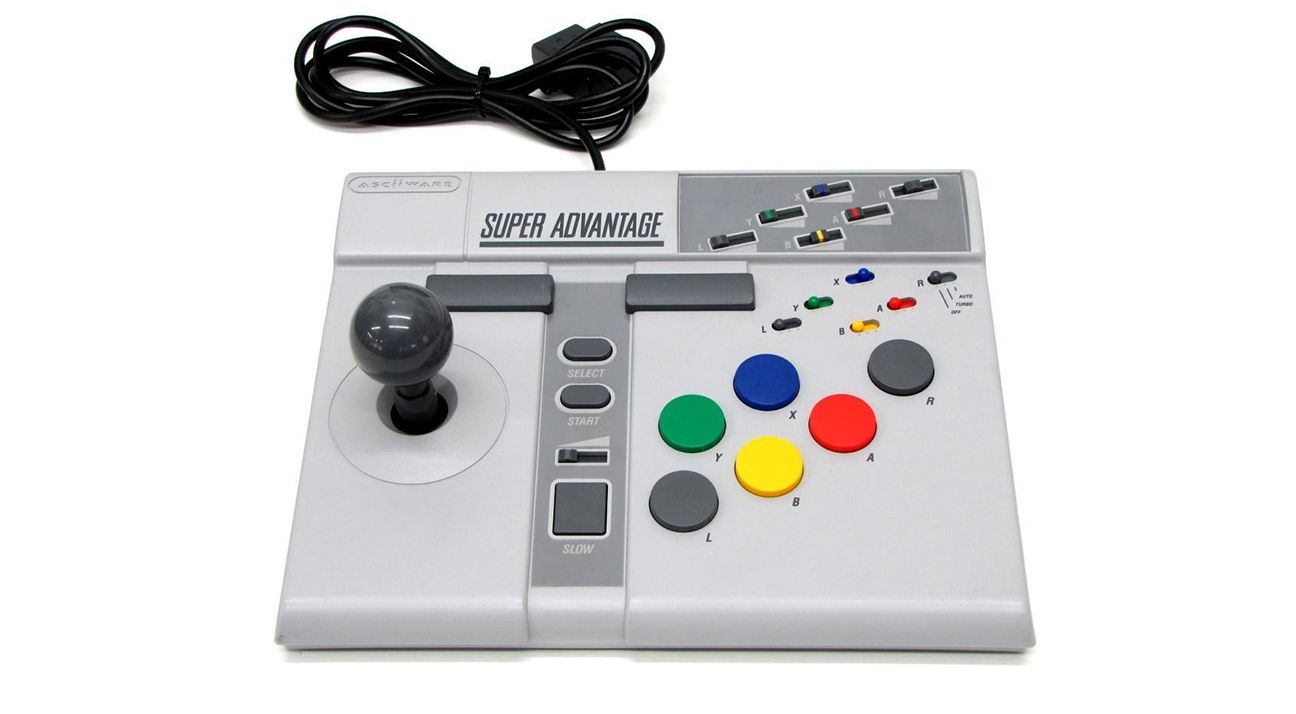
For the original Nintendo Entertainment System, Nintendo released an official fight stick called the NES Advantage. With Nintendo opting not to release a successor to the Advantage, the company Asciiware decided to manufacture one instead. The Super Advantage Fight Stick gave fighting fans a whole new way to play titles like Street Fighter II, Final Fight, Mortal Kombat II, Killer Instinct, and the Clay Fighter series. The controller had a slow button and featured sliders for things like speed and turbo options (this was in contrast to the NES Advantage, which used dials). Arcades were still largely popular during the mid-90s and the Super Nintendo featured a large selection of popular arcade fighters. As such, the Super Advantage Fight Stick was the perfect addition to a gamer’s growing SNES collection.
12 Play Game Boy Games
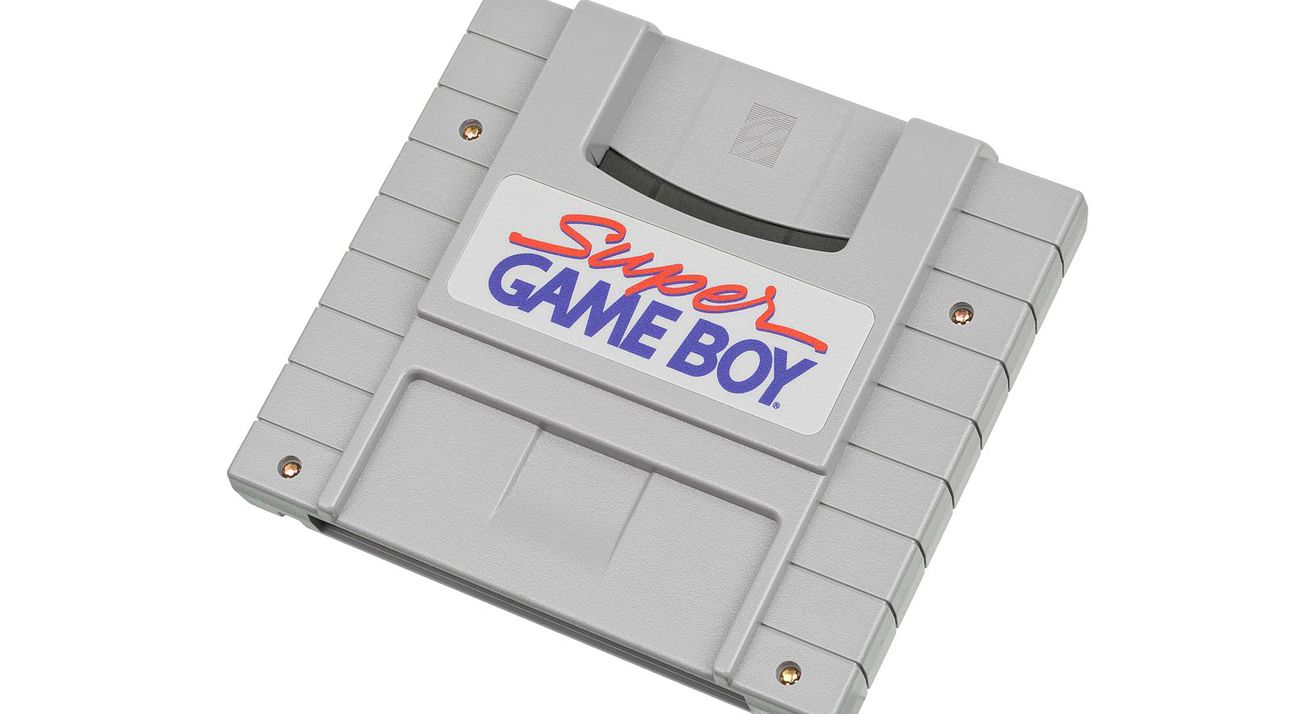
The Super Game Boy was an official add-on from Nintendo, designed to give players the ability to display Game Boy games on a television. It was the first time Nintendo developed a way to play Game Boy games off of the handheld device. The Super Game Boy looked almost identical to a Super Nintendo cartridge, and featured a slot at the top for players to place their Game Boy games. It released three years after the SNES launched and gave many handheld addicts a relief from the tiny screen (and four AA batteries). There were also a handful of titles that benefited from the Super Game Boy, giving them additional sounds and a two-player option (which wasn’t possible on the handheld). Where things get really impressive is that the Super Nintendo was never designed to be compatible with the Game Boy, which meant that the Super Game Boy was not just a cartridge; it actually had a Game Boy CPU inside to process the games.
11 Connect Online
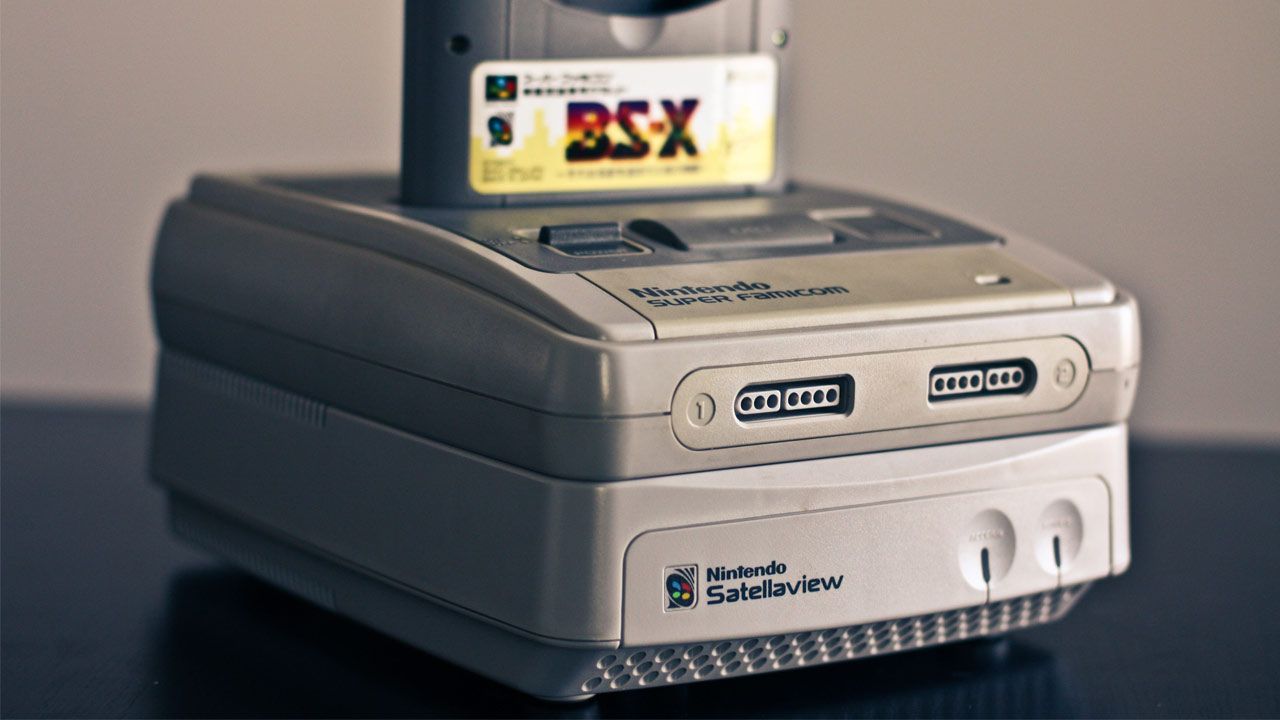
In 1995, Nintendo released (in Japan only) a peripheral called the Satellaview, which gave players a way to connect to the widely popular St.GIGA (a satellite radio). Connecting benefited gamers in multiple ways, like being able to listen to music specific to the St.GIGA network and also downloading things like extra levels, game items, and full games (specific to the network). The Satellaview could connect at a specific time, every day, for an hour to (effectively) download the latest Satellaview-specific releases. Anything downloaded from the network was saved on a memory card used only for the device. Gamers were required to purchase the Satellaview to gain access to this network of valuable game additions and the service also required a regular monthly fee. It's crazy to think that this kind of connectivity was possible in the mid-90s!
10 Play With Up To Five Players
Who doesn’t like playing with friends? The Super Nintendo saw several different peripherals which allowed gamers to add more than one other player to a game, but the Super Multitap was the first. The Super Multitap featured four ports and required being plugged into one of the two ports on the system. It was originally bundled with the game Super Bomberman, but could later be purchased separately. There are over a lot of titles for the Super Nintendo capable of taking advantage of the Multitap, most notable in the lineup are NBA Jam: Tournament Edition, Super Bomberman and Super Bomberman 2, Secret of Mana, Smash Tennis, and Madden ’95. With the release of Super Bomberman 2, a new variation on the Multitap was released in the shape of Bomberman’s face.
9 Play Backups
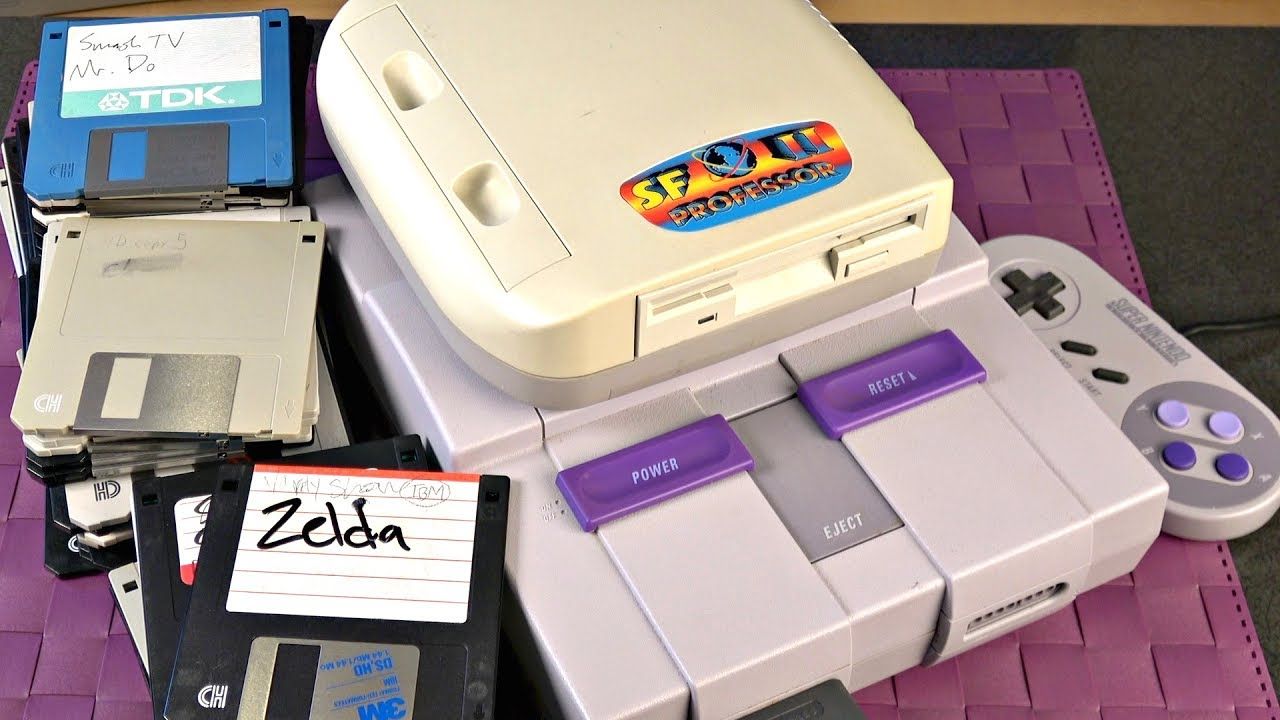
Emulation has played a large part in the Super Nintendo’s legacy and there were actual peripherals which allowed gamers to play backups directly through their SNES. One such device, the Professor SF II, allowed gamers to backup a SNES title direct to a 3.4” disk. These disks could then be played later, without requiring the original game to be present. The Professor SF II was loaded directly into the cartridge slot on top of the Super Nintendo, with a disk drive at the front for loading/unloading. SNES games were loaded into a bay on top of the Professor SF II, and could be played directly or ripped to a disk.
8 Play Golf
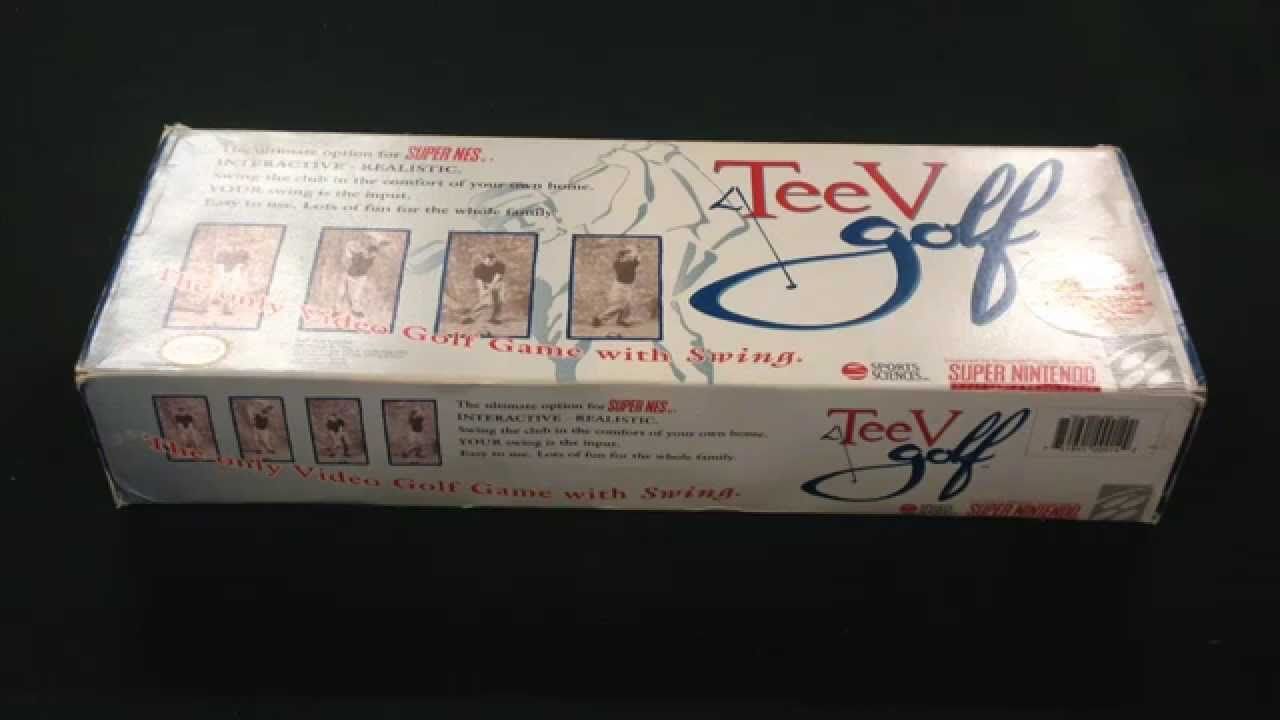
TeeV Golf was a golf simulation peripheral for both the Sega Genesis and the Super Nintendo. The add-on was a large golf adapter that was compatible with PGA Tour Golf, along with other various SNES golf games. The club was 26” long and intentionally made for both right and left-handed gamers. A shortened club was also included in the package, along with a sensor unit and adapter for the SNES. Two AA batteries were required for the device to work, and the adapter came with an 8” cord to allow for a nice distance away from your television. While most golf titles for the SNES were only minor successes, PGA Tour Golf was a fan favorite, making the device a no-brainer for golf enthusiasts and gamers.
7 Play Baseball
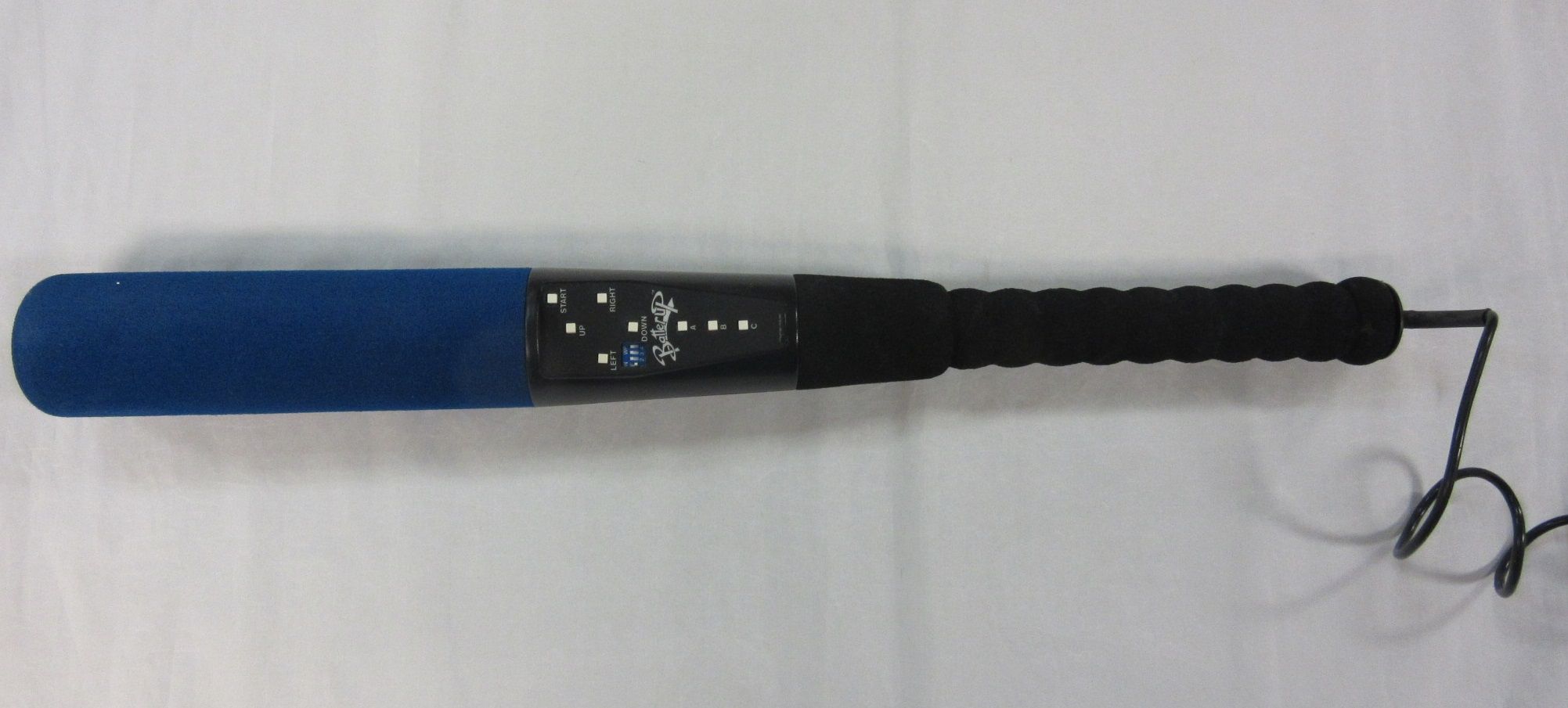
Baseball, another favorite sporting game which saw more successful titles on the Super Nintendo than golf, received a home run with the BatterUp peripheral. The plastic baseball bat was 24” long and covered in blue foam. Made by Sports Sciences, the BatterUp device could be used on several baseball titles like Cal Ripken Jr. Baseball, ESPN Baseball Tonight, Hardball III, and Super Batter Up. Unlike TeeV Golf, the BatterUp device did not come with a sensor unit, but rather had switches and buttons designed into the bat that would register the swings as movement. Similar to TeeV Golf, BatterUp was released for both the Sega Genesis and the Super Nintendo.
6 Use A Game Genie
In the 1990s, the Game Genie was a console cheater's dream. Released for almost every console, the Game Genie allowed players to enter game-specific codes that would unlock a plethora of game features, depending on the game. God-mode, unlimited ammo, and level warping were only some of the hacks possible through the device, which loaded into the SNES cartridge spot. Some games contained a performance enhancing chip, which the Game Genie wasn’t able to work with (this was patched in later versions). Nintendo was so frustrated with Galoob, the maker of the Game Genie, that they took them to court over the device. While the lawsuit was ongoing, Nintendo started to internally modify its consoles with minor changes that would stop the Game Genie from working as intended.
5 Be Inside A TV
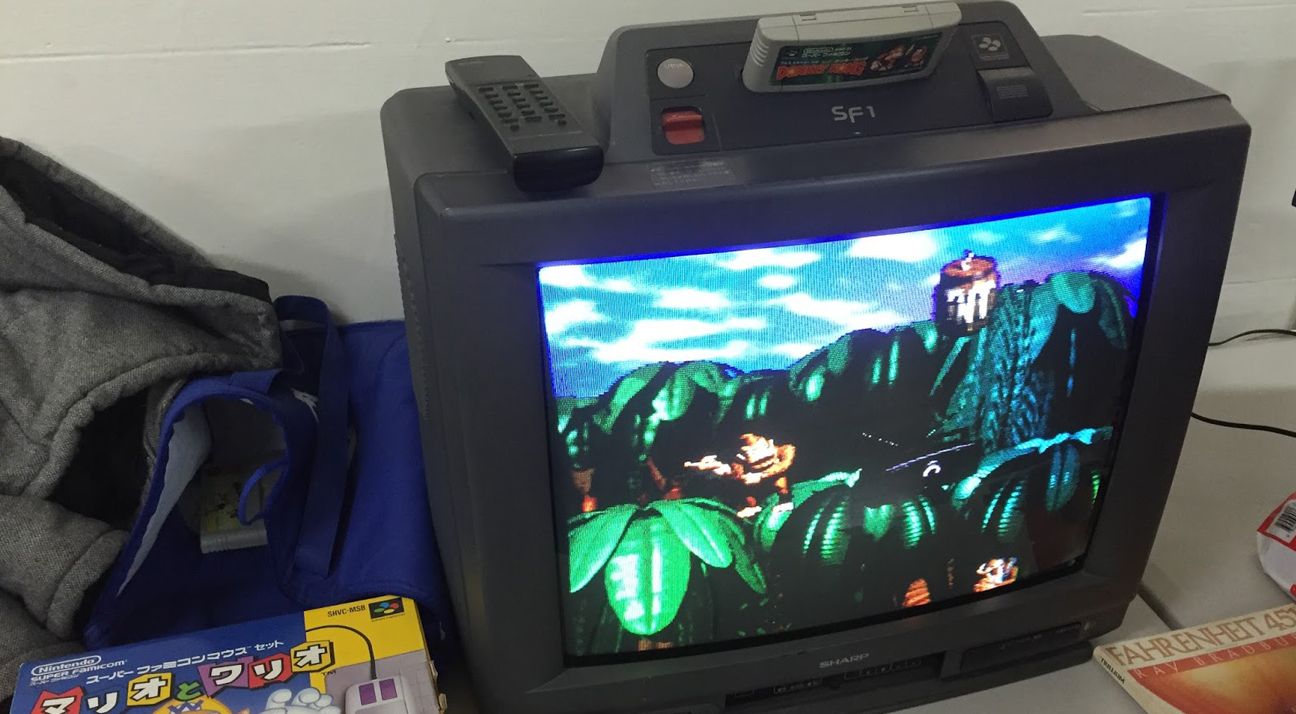
The Sharp Science Fiction-1 went by many names, but was known most commonly as the Sharp SNES TV. The television was only released in Japan and featured a Super Nintendo built directly into the television. Controller ports were on the front of the system, while the games were loaded into a SNES cartridge port atop the tv set. The television was intended to be very popular in Japan and as such featured direct compatibility with the Satellaview. The Sharp SNES TV was made available in two screen sizes: 14” and 21”. The television came into production quickly in the early 1990s, as the TV was actually a successor to the C1 NES TV – a television with a NES built inside.
4 Be Used As An Exercise Bike
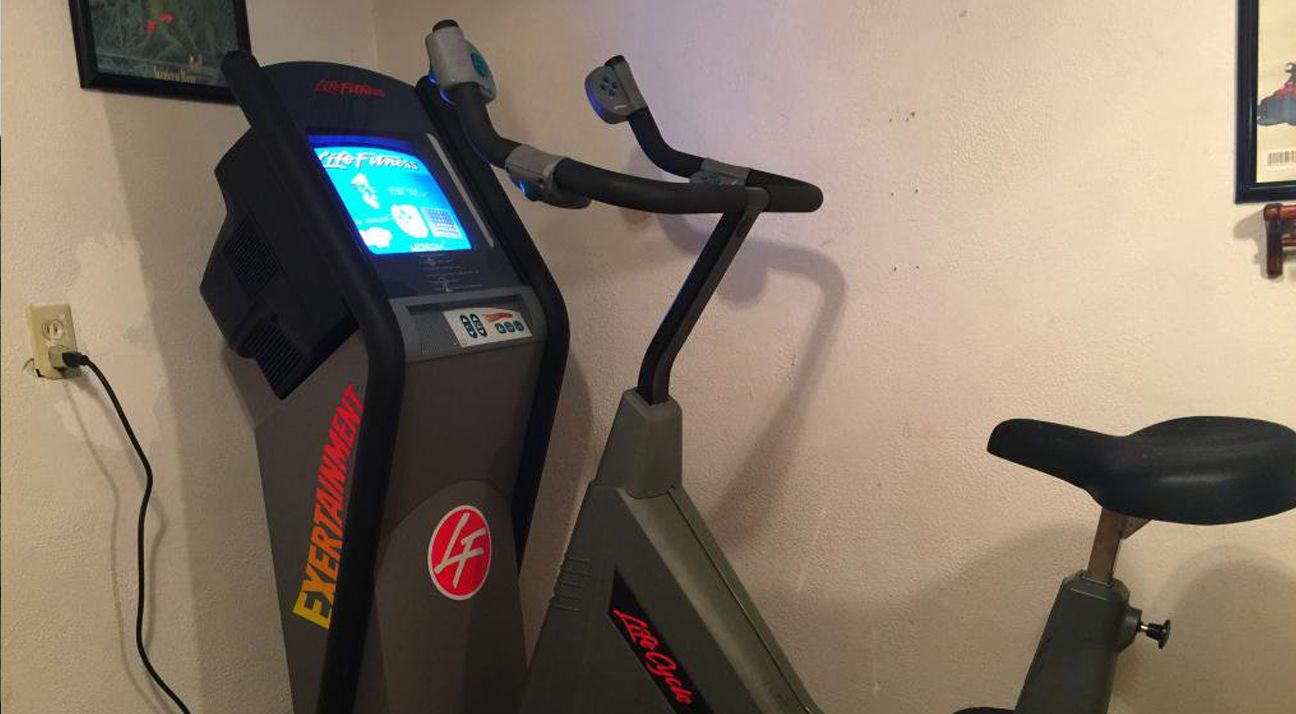
Out of all the fascinating things gamers could do with a Super Nintendo, one of the most fascinating is Exertainment, an exercise bike built exclusively for use with the SNES made by Life Fitness. Two games were specifically designed to work with the bike: Exertainment Mountain Bike Rally and Exertainment Mountain Bike Rally/Speed Racer Combo. The handles of the bike featured a variation on the SNES controller, which allowed for the rider to control the game. The bike was essentially a combination of an exercise bike and the Super Nintendo. A port at the bottom of the exercise bike connected the device directly to the Super Nintendo. Due to its size and small production run, the Exertainment bike is incredibly rare and hard to find.
3 Backwards Compatibility
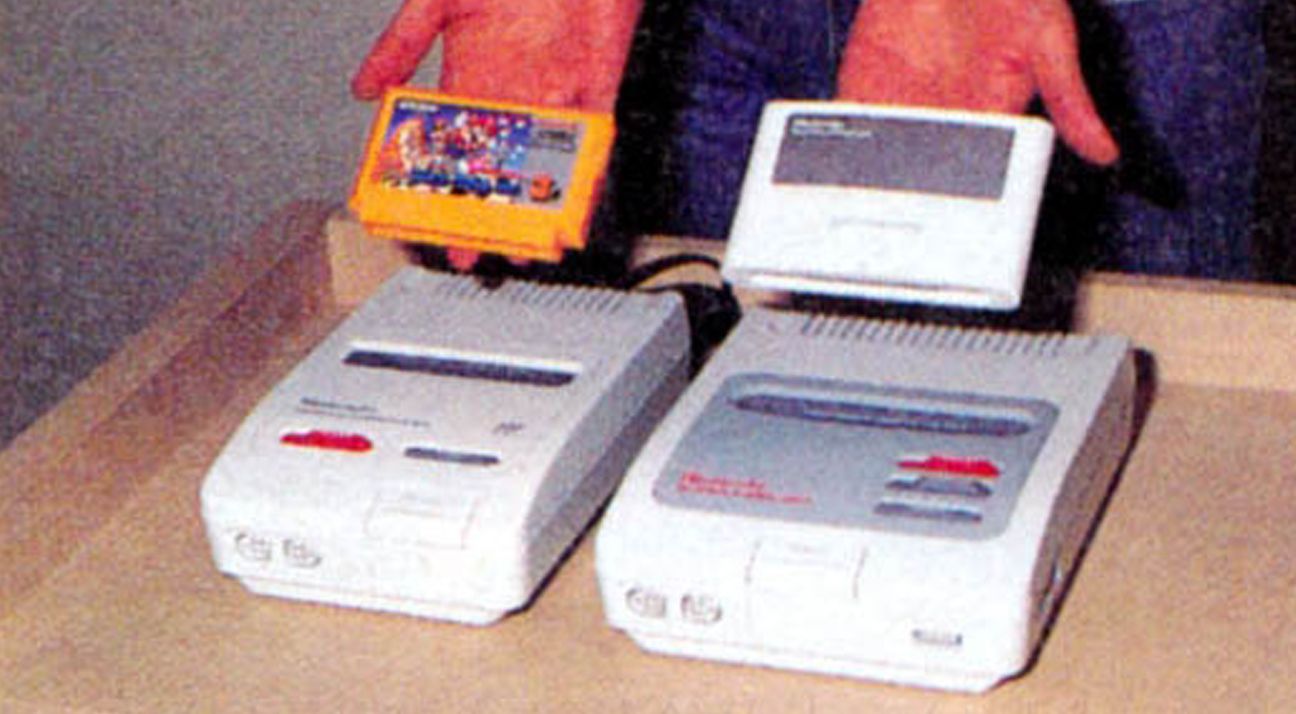
It might sound hard to believe, but the Super Nintendo was made with backwards compatibility in mind. Somewhat similar to the Super Game Boy, an add-on cartridge was originally designed by Nintendo to be able to plug directly into the Super Nintendo for the sole purpose of playing all your NES titles. This device was put into production, but ultimately never released. The Super Nintendo also used the same processor as the Nintendo and, according to Nintendo, the original purpose behind this was so that the SNES could play NES games directly. This aspect was scraped from the SNES eventually due to cost concerns, as the two-for-one system ballooned to a price point Nintendo didn’t feel consumers were ready for.
2 Listen To Games In Dolby Surround Sound
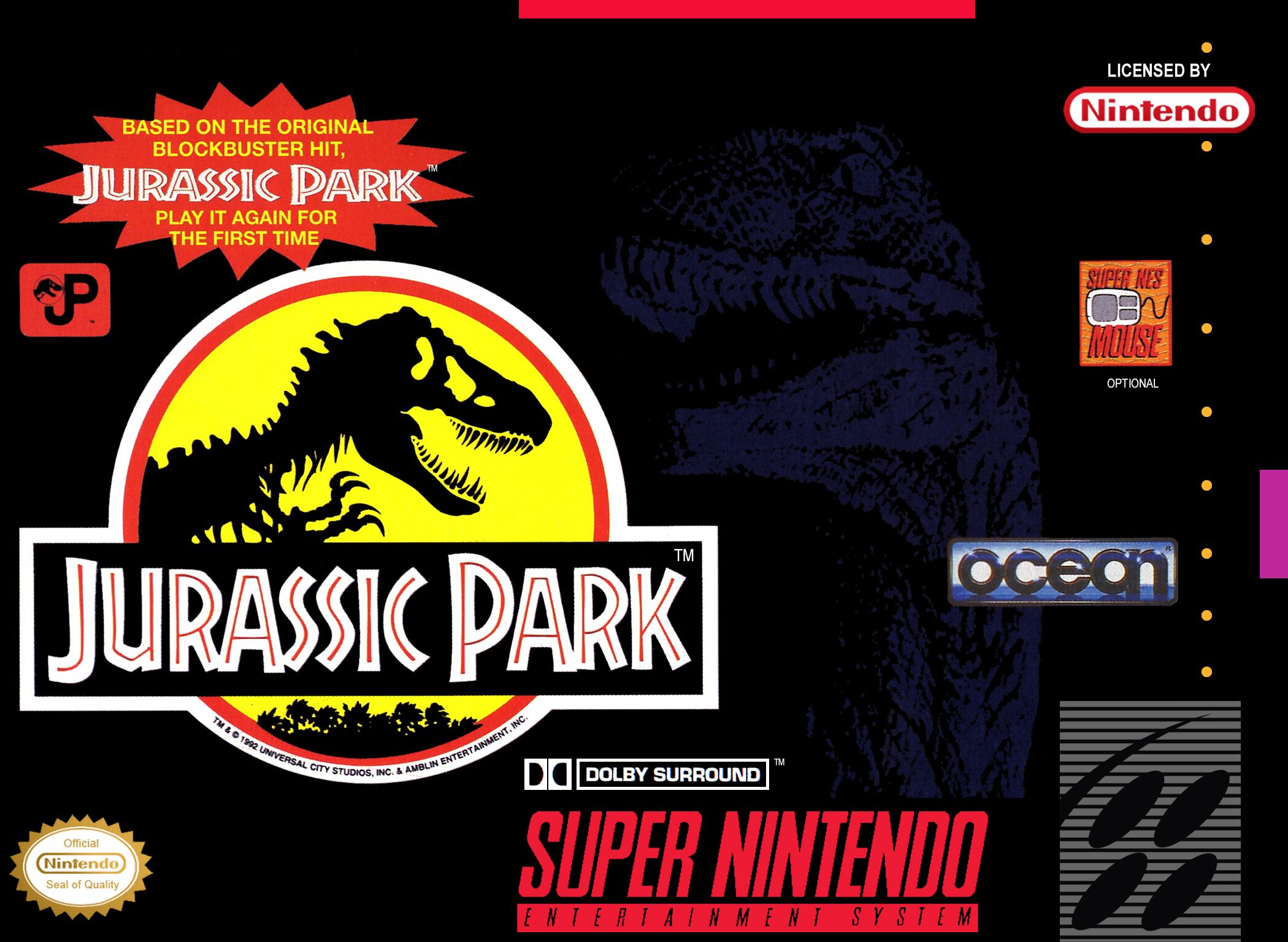
The Super Nintendo System was capable of outputting certain games in Dolby Surround Sound. Jurassic Park for the Super Nintendo was the first SNES title to feature the fantastic audio ability, with many more games releasing over the life of the console. Some titles were heavily advertised that they could be played in Dolby Surround Sound, while other games often failed to list the feature. Star Ocean, Fatal Fury, and Super Turrican 2 are just some of the other titles gamers can enjoy in Dolby Surround. No add-on is required to get the sound out of the system, all you need to do is plug the system’s audio into a device that can output in Dolby Surround and you’re all set.
1 Keep You From Using It As A Coaster
The original Nintendo featured a flattop design, with the cartridges placed inside through the front of the system. As a result, Nintendo found that several gamers would place a large quantity of odd objects on top, namely beverages. Because of that, Nintendo found that Nintendo Entertainment Systems would need to be serviced for drink spills, so, as a result, the designers of the Super Nintendo purposely designed a unit that could not be used as a coaster. The reason SNES games load directly into the top of the system was to keep gamers from placing anything else on top of the console. Additionally, have you ever noticed how your SNES is not a flat console? Nintendo designers took specific lengths to ensure that the console would not be flat, to discourage any sort of storage use on top.

